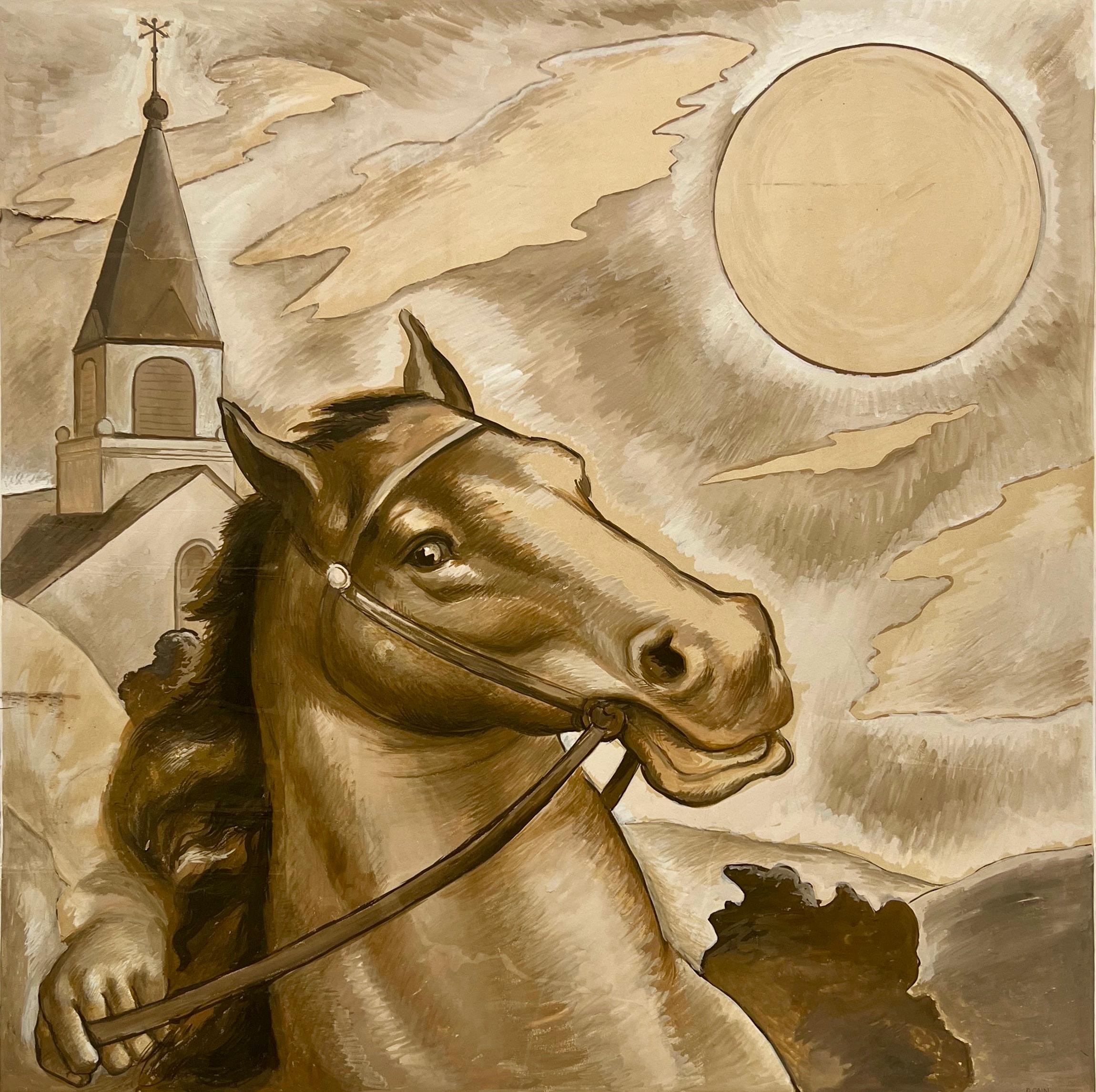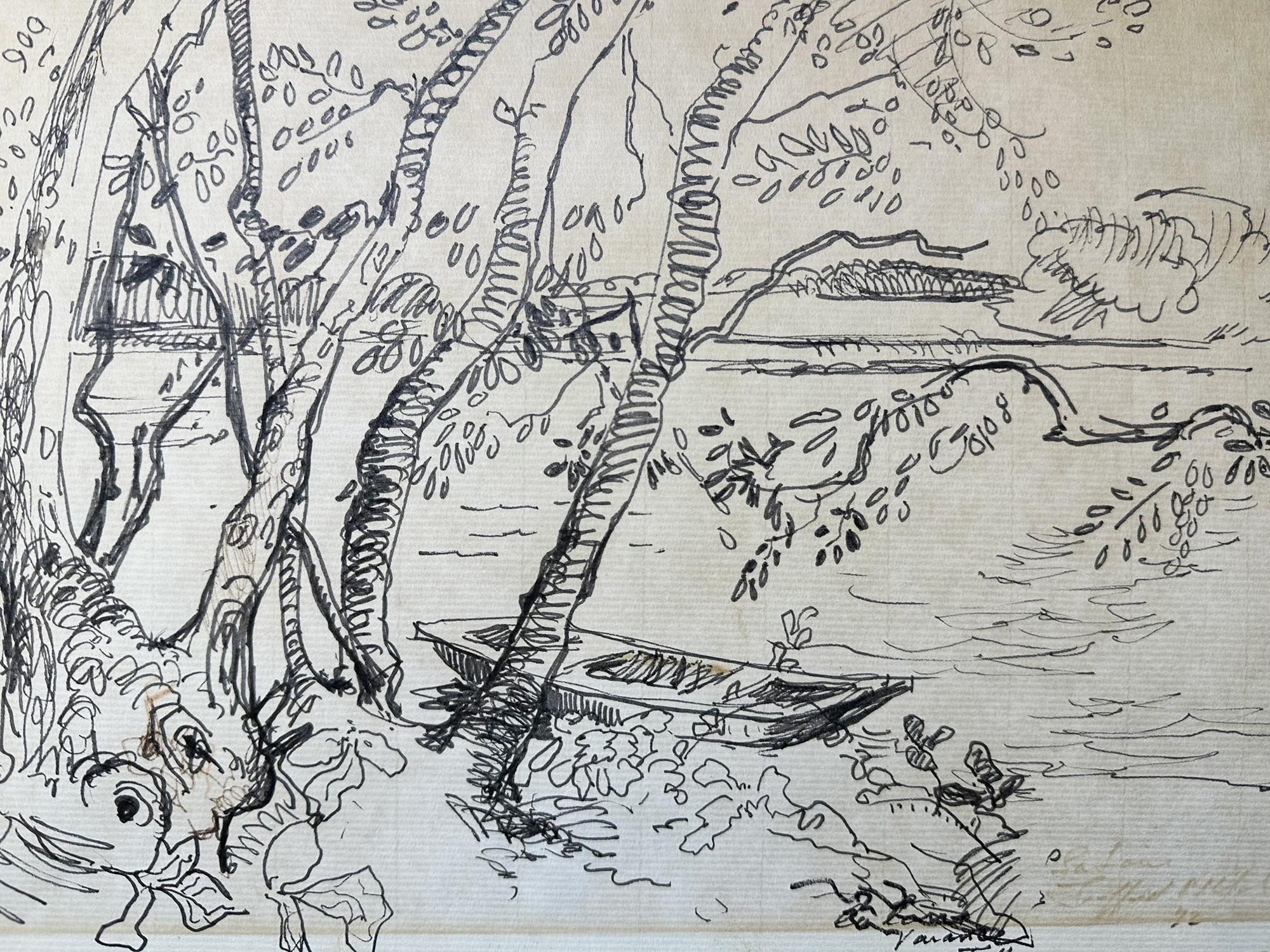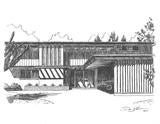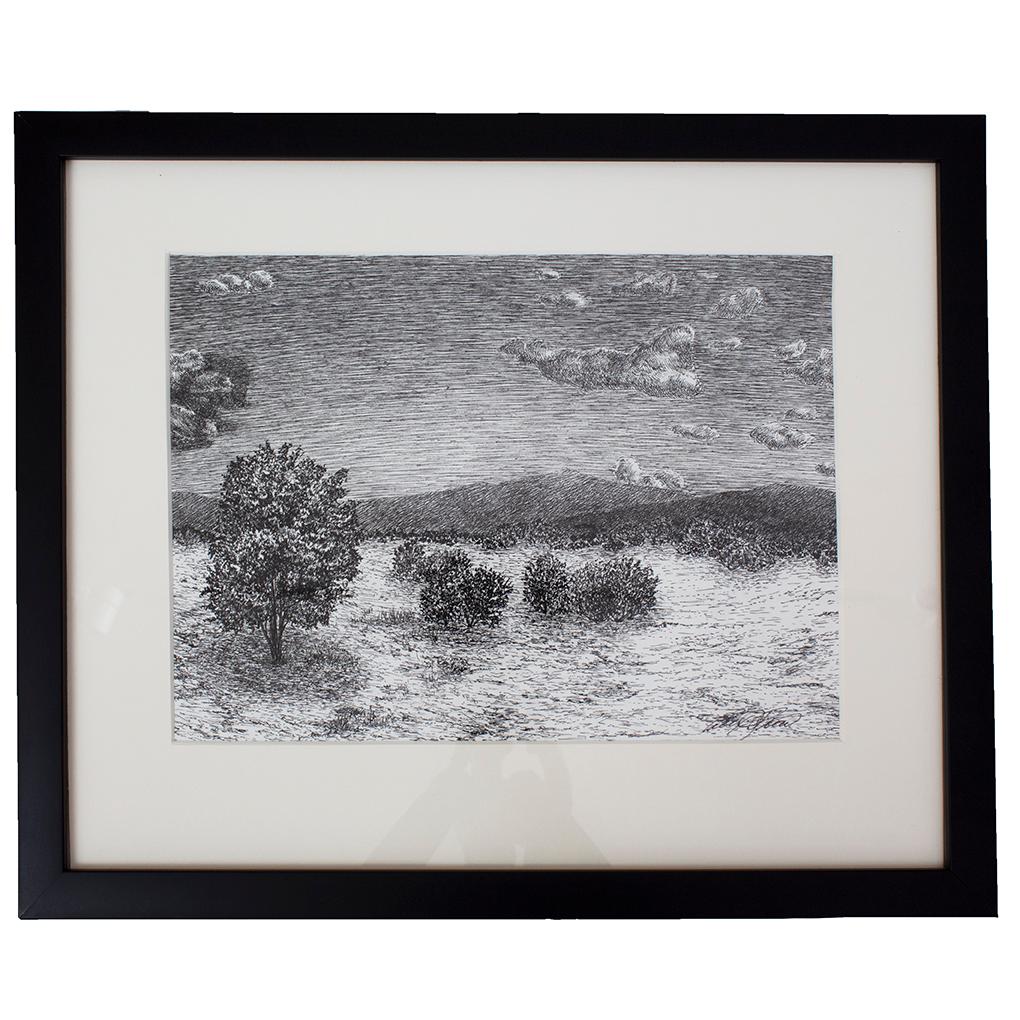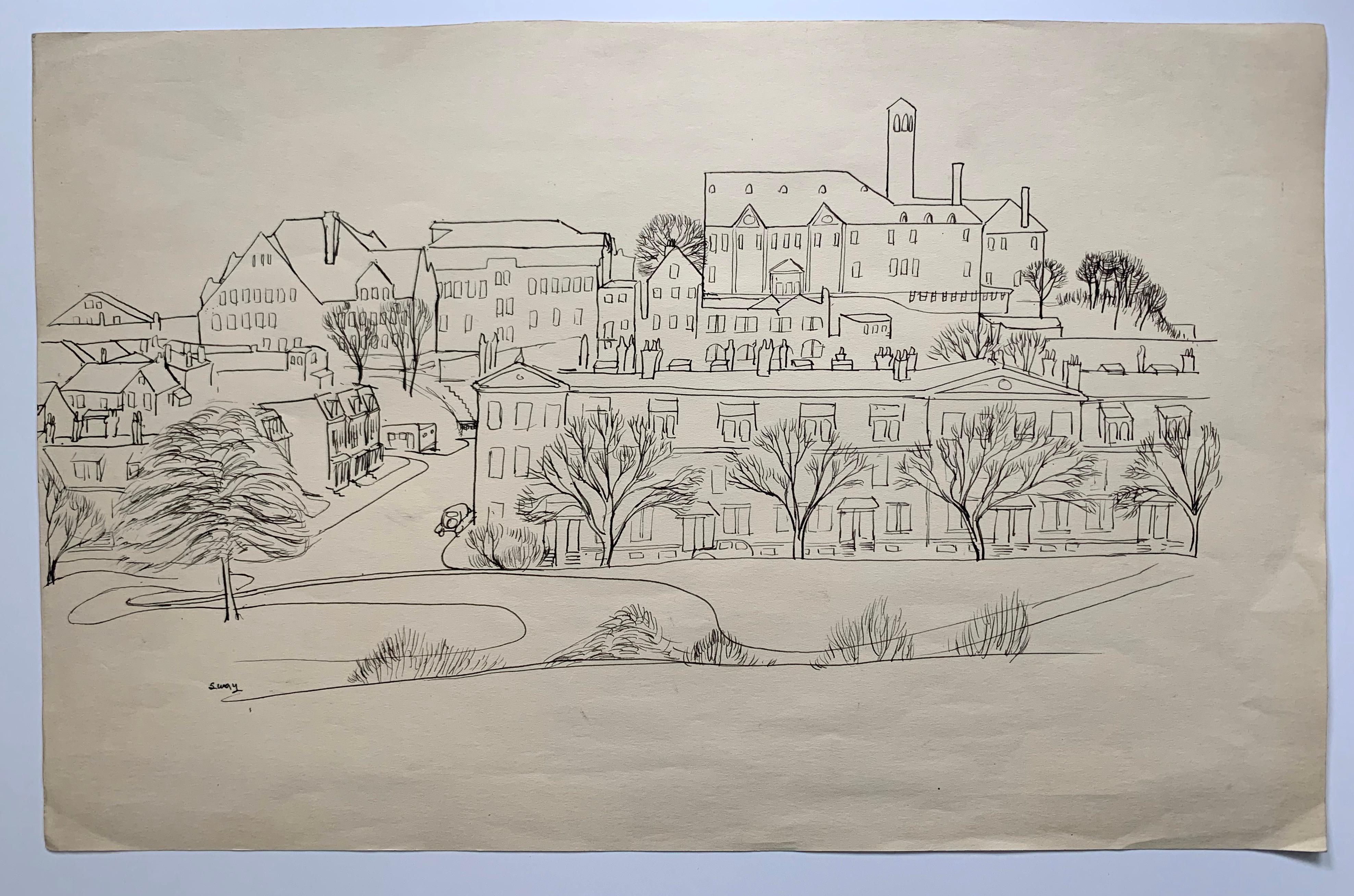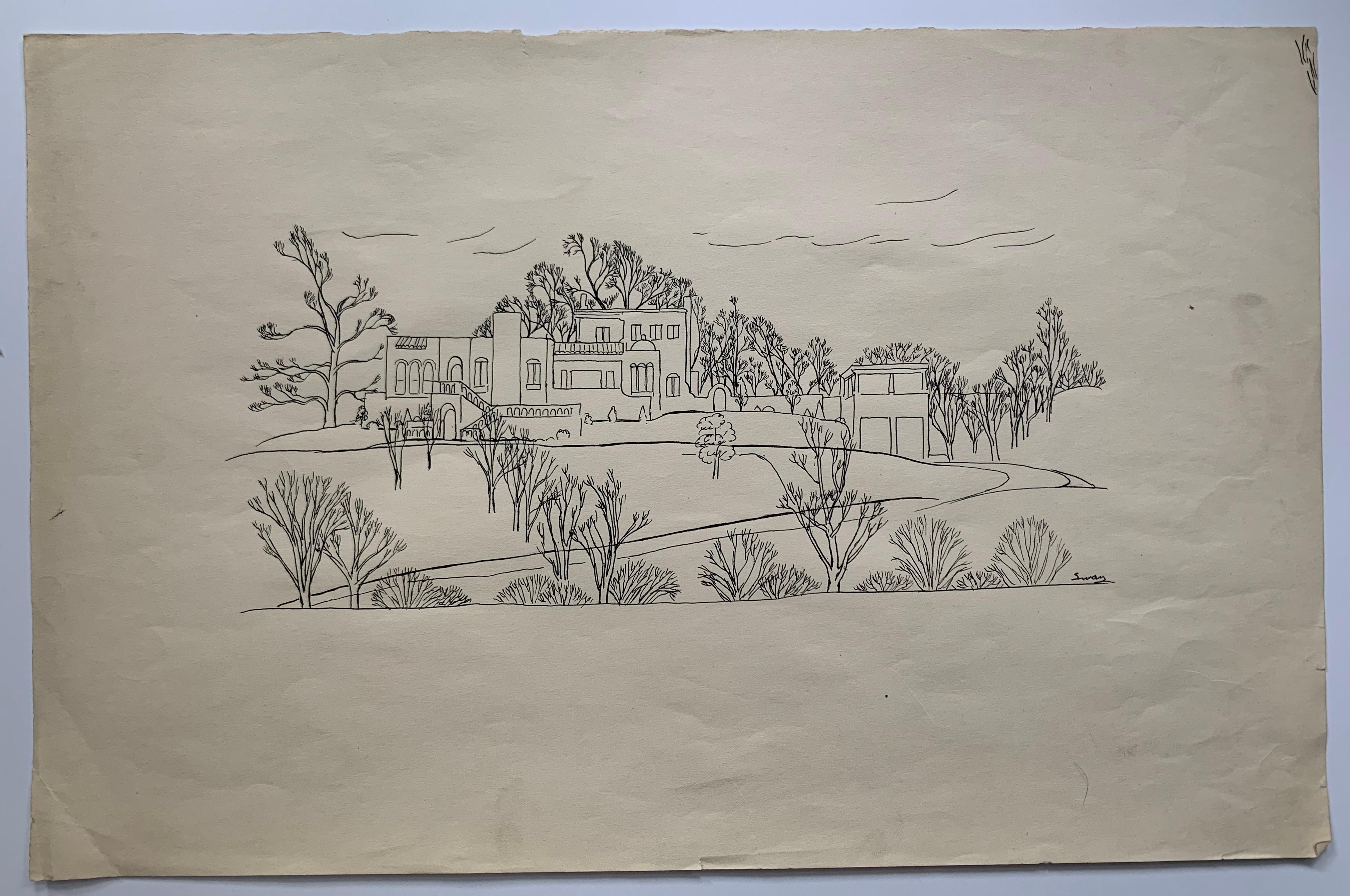Items Similar to Minneapolis
Want more images or videos?
Request additional images or videos from the seller
1 of 8
Adolf Dehn Minneapolis1930
1930
About the Item
Note: Dehn was born in Minnesota. He attended the Minneapolis Institute of Art. This work is a view of the Stone Arch Bridge in Minneapolis with the Pillsbury "A"-Mill in the background.
Signed and dated in ink lower right
Provenance: Estate of the artist
By decent
Condition: Excellent
Adolf Arthur Dehn
(1895-1968)
Adolf Dehn, printmaker, watercolorist, and illustrator, was born in Waterville, Minnesota, in 1895. In 1914 he began studying at the Minneapolis School of Art, and in 1917, the year his first published drawing appeared in the progressive magazine, The Masses, he received a scholarship to study at the Art Students League in New York. There he worked with Kenneth Hayes Miller and was introduced to lithography by Boardman Robinson.
While in New York, Dehn threw himself into liberal politics. Declaring himself a conscientious objector in 1918, he was forced to spend four months in a Spartanburg, South Carolina, boot camp for refusing to serve in the armed forces and eight months as a volunteer instructor teaching painting and drawing at a hospital for war victims in Asheville, North Carolina.
Dehn spent the years 1920 to 1929 in art-related travel in Europe, primarily in Vienna and in Paris, where he made lithographs at the Atelier Desjobert, and earned an early reputation as a satirical lithographer. Throughout this time, Dehn exhibited his work at the Weyhe Gallery in New York and contributed drawings both to magazines abroad and to the radical journal The Masses.
Upon his return to New York in 1929, he became a leading figure in printmaking circles, exhibiting his prints to considerable critical acclaim. In 1937, Dehn had worked exclusively in black and white until 1937—halfway through his career—when he began to work in watercolor. During his summer visits to Minnesota, he created a large body of regional watercolors depicting the lakes and farms of his home state. Lithography and watercolor remained his two primary media, and his subjects ranged from social satire to naturalistic landscapes.
In 1943, he won First Prize at the International Watercolor Exhibition at the Art Institute of Chicago. He authored the treatise, Water Color Painting, in 1945 and two other instructional books on lithography and watercolor in 1950 and 1955. From 1938 to 1939 he taught at Stephens College in Columbia, Missouri, and during the summers of 1940-1942 he taught at the Colorado Springs Fine Arts Center.
In 1939 and 1951 Dehn received Guggenheim Fellowships, and 1961 he was elected Full Academician to the National Academy of Design.
Dehn exhibited throughout his career, and his works are in the permanent collections of the Metropolitan Museum of Art, the Museum of Modern Art, the Art Institute of Chicago, the Museum of Fine Arts in Boston, and the British Museum, among others.
Adolf Dehn died in New York in 1968 of a heart attack.
Courtesy: AskArt
- Creator:Adolf Dehn (1895 - 1968, American)
- Creation Year:1930
- Dimensions:Height: 14.375 in (36.52 cm)Width: 20 in (50.8 cm)
- Medium:
- Movement & Style:
- Period:
- Condition:
- Gallery Location:Fairlawn, OH
- Reference Number:
About the Seller
5.0
Recognized Seller
These prestigious sellers are industry leaders and represent the highest echelon for item quality and design.
Platinum Seller
These expertly vetted sellers are 1stDibs' most experienced sellers and are rated highest by our customers.
Established in 1978
1stDibs seller since 2013
711 sales on 1stDibs
Typical response time: 1 hour
Associations
International Fine Print Dealers Association
- ShippingRetrieving quote...Ships From: Fairlawn, OH
- Return PolicyA return for this item may be initiated within 10 days of delivery.
More From This SellerView All
- untitled (The White Barn with Farmers and Horse)By William GrauerLocated in Fairlawn, OHuntitled (The White Barn with Farmers and Horse) Watercolor, c. 1950 Signed by the artist in ink lower right: Wm. C. Grauer Numbered in pencil verso: 152 Provenance: Estate of the Artist Gretchen Grauer Vanderhoof, the artist's daughter Condition: Excellent Image/Sheet size: 18 3/4 x 24 inches William C. Grauer (1895-1985) William C. Grauer (1895-1985) was born in Philadelphia to German immigrant parents. After attending the Philadelphia Museum School of Industrial Art, Grauer received a four year scholarship from the City of Philadelphia to pursue post graduate work. It was during this time that Grauer began working as a designer at the Decorative Stained Glass Co. in Philadelphia. Following his World War I service in France, Grauer moved to Akron, Ohio where he opened a studio in 1919 with his future brother-in-law, the architect George Evans...Category
1950s American Realist Landscape Drawings and Watercolors
MaterialsWatercolor
- Breaking Up of the PenelopeBy Edward DobrotkaLocated in Fairlawn, OHBreaking Up of the Penelope watercolor on artists watercolor board, 1942 Signed and dated by the artist lower right (see photo) Exhibitions: Cleveland, OH, The Cleveland Museum of Art, May 3 - June 11, 1944: "The 26th Annual Ehibition of Works by Artists and Craftsmen of the Western Reserve," , (label on verso) Youngstown OH, The Butler Insititue of American Art, 1943: "1943 New Year Show," , (label on verso) "Ed Dobrotka was one of comic-book illustrator Joe Shuster's early assistants. In the studio, he worked on the 'Superman' series, inking the pencils of artists including Shuster, John Sikela, Leo Nowak and Wayne Boring. Dobrotka did do some pencilling of his own, however he returned to inking exclusively in 1945. In the following years, he worked with Sikela on the 'Superboy' series until the 1950s. He has also work on the solo 'Lois Lane...Category
1940s American Realist Landscape Drawings and Watercolors
MaterialsWatercolor
- Building New YorkBy Leon KrollLocated in Fairlawn, OHBuilding New York Watercolor on paper, c. 1915 Signed by the artist lower right (see photo) Partial watermark: "MADE IN ENGLAND... LINEN FIBER" Excellent, COLORS FRESH AND VIBRANT Br...Category
1910s American Realist Landscape Drawings and Watercolors
MaterialsWatercolor
- Study of an Italian Town with Women in a DoorwayBy Jared FrenchLocated in Fairlawn, OHStudy of an Italian Town with Women in a Doorway Graphite on cream wove paper, c. 1960 Signed by the artist in pencil lower right (see photo) A master of ...Category
1960s American Realist Landscape Drawings and Watercolors
MaterialsGraphite
- Irish SeaBy Edward DobrotkaLocated in Fairlawn, OHIrish Sea Watercolor, 1947 Signed and dated by the artist lower right Condition: Excellent Image/Sheet size: 12 x 18 inches Provenance: Estate of the Artist ...Category
1940s American Realist Landscape Drawings and Watercolors
MaterialsWatercolor
- Horses Leaving the BarnBy Adolf DehnLocated in Fairlawn, OHHorses Leaving the Barn Watercolor on paper, 1940 Signed and dated lower left corner (see photo) Condition: Excellent Image: 14 1/2 x 21” Frame: 25” x 31” Provenance; Associated American Artists, New York (see photo of label) Mamdouha and Elmer Holmes Bobst Displayed in an original wormy chestnut frame with OP3 Acrylic. Most probably from the AAA Dehn watercolor exhibition of 1940. Vintage original framing chosen by the artist. Note: Elmer Holmes Bobst (1884–1978) was an American businessman and philanthropist who worked in the pharmaceutical industry. His wife, Mamdouha, was also well known philanthropist. Bobst was born in Lititz, Pennsylvania. He aspired to become a doctor, but instead, he taught himself pharmacology. After his wife Ethel composed his interview letter, he became manager and treasurer of the Hoffman-LaRoche Chemical Works by 1920. When Bobst retired from the company in 1944, he was one of the nation's highest paid corporate executives. In 1945 he took charge of the ailing William Warner Company (later Warner–Lambert) and he remained board chairman until his retirement. Bobst had close connections to President Dwight Eisenhower, but was also a close friend of President Richard Nixon. Note: In 1940, the year of this watercolor, Dehn and Elizabeth Timmerman visited Waterville, MN on their way to Colorado Sprint, Colorado where Dehn was to teach lithography and watercolor. This watercolor is obviously a view of the area around Waterville. Adolf Dehn, American Watercolorist and Printmaker, 1895-1968 Adolf Dehn was an artist who achieved extraordinary artistic heights, but in a very particular artistic sphere—not so much in oil painting as in watercolor and lithography. Long recognized as a master by serious print collectors, he is gradually gaining recognition as a notable and influential figure in the overall history of American art. In the 19th century, with the invention of the rotary press, which made possible enormous print runs, and the development of the popular, mass-market magazines, newspaper and magazine illustration developed into an artistic realm of its own, often surprisingly divorced from the world of museums and art exhibitions, and today remains surprisingly overlooked by most art historians. Dehn in many regards was an outgrowth of this world, although in an unusual way, since as a young man he produced most of his illustrative work not for popular magazines, such as The Saturday Evening Post, but rather for radical journals, such as The Masses or The Liberator, or artistic “little magazines” such as The Dial. This background established the foundation of his outlook, and led later to his unique and distinctive contribution to American graphic art. If there’s a distinctive quality to his work, it was his skill in introducing unusual tonal and textural effects into his work, particularly in printmaking but also in watercolor. Jackson Pollock seems to have been one of many notable artists who were influenced by his techniques. Early Years, 1895-1922 For an artist largely remembered for scenes of Vienna and Paris, Adolf Dehn’s background was a surprising one. Born in Waterville, Minnesota, on November 22, 1895, Dehn was the descendent of farmers who had emigrated from Germany and homesteaded in the region, initially in a one-room log cabin with a dirt floor. Adolf’s father, Arthur Clark Dehn, was a hunter and trapper who took pride that he had no boss but himself, and who had little use for art. Indeed, during Adolf’s boyhood the walls of his bedroom and the space under his bed were filled with the pelts of mink, muskrats and skunks that his father had killed, skinned and stretched on drying boards. It was Adolf’s mother, Emilie Haas Dehn, a faithful member of the German Lutheran Evangelical Church, who encouraged his interest in art, which became apparent early in childhood. Both parents were ardent socialists, and supporters of Eugene Debs. In many ways Dehn’s later artistic achievement was clearly a reaction against the grinding rural poverty of his childhood. After graduating from high school in 1914 at the age of 19—an age not unusual in farming communities at the time, where school attendance was often irregular—Dehn attended the Minneapolis School of Art from 1914 to 1917, whose character followed strongly reflected that of its director, Munich-trained Robert Kohler, an artistic conservative but a social radical. There Dehn joined a group of students who went on to nationally significant careers, including Wanda Gag (later author of best-selling children’s books); John Flanagan (a sculptor notable for his use of direct carving) Harry Gottlieb (a notable social realist and member of the Woodstock Art Colony), Elizabeth Olds (a printmaker and administrator for the WPA), Arnold Blanch (landscape, still-life and figure painter, and member of the Woodstock group), Lucille Lunquist, later Lucille Blanch (also a gifted painter and founder of the Woodstock art colony), and Johan Egilrud (who stayed in Minneapolis and became a journalist and poet). Adolf became particularly close to Wanda Gag (1893-1946), with whom he established an intense but platonic relationship. Two years older than he, Gag was the daughter of a Bohemian artist and decorator, Anton Gag, who had died in 1908. After her husband died, Wanda’s mother, Lizzi Gag, became a helpless invalid, so Wanda was entrusted with the task of raising and financially supporting her six younger siblings. This endowed her with toughness and an independent streak, but nonetheless, when she met Dehn, Wanda was Victorian and conventional in her artistic taste and social values. Dehn was more socially radical, and introduced her to radical ideas about politics and free love, as well as to socialist publications such as The Masses and The Appeal to Reason. Never very interested in oil painting, in Minneapolis Dehn focused on caricature and illustration--often of a humorous or politically radical character. In 1917 both Dehn and Wanda won scholarships to attend the Art Students League, and consequently, in the fall of that year both moved to New York. Dehn’s art education, however, ended in the summer of 1918, shortly after the United States entered World War I, when he was drafted to serve in the U. S. Army. Unwilling to fight, he applied for status as a conscientious objector, but was first imprisoned, then segregated in semi-imprisonment with other Pacifists, until the war ended. The abuse he suffered at this time may well explain his later withdrawal from taking political stands or making art of an overtly political nature. After his release from the army, Dehn returned to New York where he fell under the spell of the radical cartoonist Boardman Robinson and produced his first lithographs. He also finally consummated his sexual relationship with Wanda Gag. The Years in Europe: 1922-1929 In September of 1921, however, he abruptly departed for Europe, arriving in Paris and then moving on to Vienna. There in the winter of 1922 he fell in love with a Russian dancer, Mura Zipperovitch, ending his seven-year relationship with Wanda Gag. He and Mura were married in 1926. It was also in Vienna that he produced his first notable artistic work. Influenced by European artists such as Jules Pascin and Georg Grosz, Dehn began producing drawings of people in cafes, streets, and parks, which while mostly executed in his studio, were based on spontaneous life studies and have an expressive, sometimes almost childishly wandering quality of line. The mixture of sophistication and naiveté in these drawings was new to American audiences, as was the raciness of their subject matter, which often featured pleasure-seekers, prostitutes or scenes of sexual dalliance, presented with a strong element of caricature. Some of these drawings contain an element of social criticism, reminiscent of that found in the work of George Grosz, although Dehn’s work tended to focus on humorous commentary rather than savagely attacking his subjects or making a partisan political statement. Many Americans, including some who had originally been supporters of Dehn such as Boardman Robinson, were shocked by these European drawings, although George Grocz (who became a friend of the artist in this period) admired them, and recognized that Dehn could also bring a new vision to America subject matter. As he told Dehn: “You will do things in America which haven’t been done, which need to be done, which only you can do—as far at least as I know America.” A key factor in Dehn’s artistic evolution at this time was his association with Scofield Thayer...Category
1940s American Realist Landscape Drawings and Watercolors
MaterialsWatercolor
You May Also Like
- Bronx Post Office Mural Study WPA Horse Social Realism Mid 20th Century ModernBy Jo CainLocated in New York, NYBronx Post Office Mural Study WPA Horse Social Realism Mid 20th Century Modern Jo Cain (1904 - 2003) Couriers of History Bronx Post Office Mural Study Horse in the Sun (with two ad...Category
1930s American Realist Animal Drawings and Watercolors
MaterialsInk, Gouache, Board
- La LoireLocated in Middletown, NYPen and black ink on watermarked Ingres laid paper, 9 1/4 x 12 1/4 inches (234 x 310 mm), signed, dated and titled in brown ink, and initialed and titled in black ink in the lower right corner. Light to moderate age tone and mat tone, and with the signature and notations in brown ink having become quite attenuated, although legible. Presented in a basic black wood frame with a label from the Country Art...Category
Mid-20th Century American Realist Landscape Drawings and Watercolors
MaterialsInk, Handmade Paper, Pen
- Williams ResidenceBy Danny HellerLocated in Fairfield, CTRepresented by George Billis Gallery, NY & LA -- From the artist statement, "My artwork centers on mid-century American architecture and design, once revered for its groundbreaking i...Category
2010s American Realist Landscape Drawings and Watercolors
MaterialsPaper, Ink
- Untitled (Landscape #21)Located in Albuquerque, NMAlex Peña, Untitled (Landscape #21), 2021, ink on paper Framed size: 12.5" x 14.5" Image size: 7.5" x 10.5"Category
2010s American Realist Landscape Drawings and Watercolors
MaterialsInk, Archival Paper
- Cincinnati Ohio cityscape drawing WPA eraLocated in Wilton Manors, FLBeautiful original drawing by American artist, Albert Sway (b.1913). Cincinnati Cityscape, ca. 1935. Ink on paper measures 11 x 17 inches. Signed lower right. Good condition with no ...Category
1930s American Realist Landscape Drawings and Watercolors
MaterialsPaper, Ink
- Cincinnati Ohio cityscape drawing WPA eraLocated in Wilton Manors, FLBeautiful original drawing by American artist, Albert Sway (b.1913). Cincinnati Cityscape, ca. 1935. Ink on paper measures 9.5 x 12 inches. Signed lower right. Good condition with no...Category
1930s American Realist Landscape Drawings and Watercolors
MaterialsPaper, Ink
Recently Viewed
View AllMore Ways To Browse
Minneapolis Art
Stone Arch
British Prints And Watercolors
Vintage Heart Drawing
Hearts 1930
Black And White Lithograph Drawing
Watercolor Landscapes Colorado
Travel Ink Drawing
Arch Bridge
1930 Colorado
Bridge And Lake
Vintage Water Mill
Political Lithographs 1950
Arch Bridge Painting
American Atelier At Home
Britains Vintage Farm
Colorado Bridge
Vintage Summer Camp Signs
